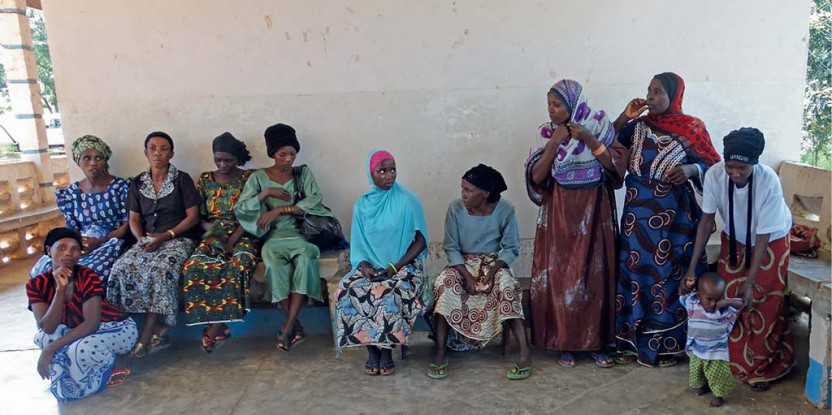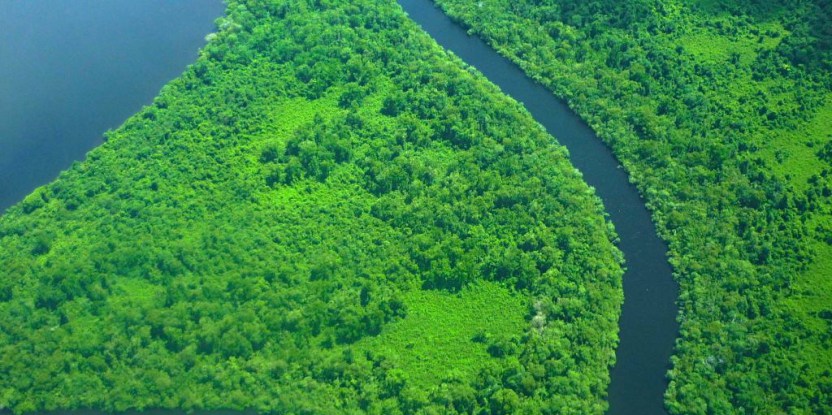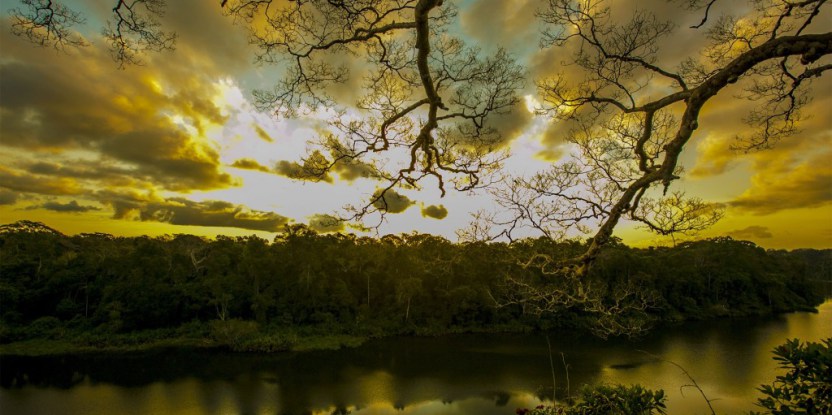BOGOR, Indonesia—Jane Goodall is known worldwide for her decades of work with chimpanzees in the Gombe forest of Western Tanzania.
It’s less well known that the NGO she founded, the Jane Goodall Institute (JGI), has been experimenting with how REDD+—touted as the next big idea for tackling climate change by reducing deforestation—could help protect the apes’ habitat, and the livelihoods of the people that live around them.
That’s a lot of people. The Masito Ugalla ecosystem, on the shores of Lake Tanganyika, is one of the poorest parts of the country, and burdened with a high rate of population growth.
In 2009, the Norwegian Government offered to fund projects across Tanzania that would pilot the concept of REDD+ (Reducing Emissions through Deforestation and forest Degradation). The idea was to pay communities to keep forests standing through the sale of carbon credits that could be traded internationally.
“There was a lot of enthusiasm at the beginning,” said Demetrius Kweka, a researcher from the Center for International Forestry Research (CIFOR) who has been analyzing half a dozen REDD+ initiatives in Tanzania for a new book, “REDD+ on the Ground: A case book of subnational initiatives across the globe.”
JGI received funding to implement a pilot REDD+ project in seven villages in the Kigoma region, called “Building REDD Readiness in the Masito Ugalla Ecosystem Pilot Area in Support of Tanzania’s National REDD Strategy,” and aiming to protect 900 square kilometers of the Masito forest.
“It had a really good setup overall,” Kweka said. “They came up with some innovative techniques.”
POINTS FOR PARTICIPATION
One of those techniques was the benefit-sharing mechanism—the way funds from a carbon market would be shared out. Norway provided initiatives with $US 200,000 in start-up money they could use to give cash incentives to communities and to test how such payments might work on the ground.
“The benefit sharing mechanism JGI used was very interesting—it was actually like a competition. They made the villages compete in terms of what they could do for their forest, or what they could do in terms of forest management,” Kweka said.
It worked on a points system, with each village collecting points based on their engagement and participation.
“Seven villages were told, You can’t get the same amount, because your efforts are different. Some were more into conservation and did a lot of work patrolling, restricting forest access, attending meetings. And others were not so keen—so they received less money,” he said.
“It was a very interesting way to get the villagers participating fully in forest conservation.”
You can have real-time monitoring of what is happening, the changes in the forest
JGI established a community-based organization known as JUWAMMA, made up of village representatives and through which decisions about benefit-sharing could be made and funds distributed. The organization collaborates with village leaders and the district council to manage forests and organize forest patrols.
The idea is it will take responsibility for the initiative in the long run—although it will require support from JGI to meet some of the more technical requirements of REDD+, Kweka said.
JUWAMMA was well designed, Kweka says, because it fits well into the local institutional context.
“They made the head of the district their patron, to ensure they really got the support of the government. So JUWAMMA represents the villages, but really ties up with the government system,” he said.
SMARTPHONES IN THE FOREST
The Jane Goodall Institute also partnered with the Woods Hole Research Center and Google Earth to trial innovative smartphone forest-monitoring technology.
“The way it works is someone is sitting down in Western Tanzania in the forest with a smartphone, and they plug in data—like tree measurements, recent deforestation—which are displayed on computers and can be shared remotely,” Kweka said.
“You can have real-time monitoring of what is happening, the changes in the forest,” he said.
“Other projects doing forest monitoring could use these types of methods.”
‘IT AFFECTS EVERYONE PSYCHOLOGICALLY’
But despite strong beginnings, the JGI program—like many other REDD+ initiatives—is struggling to find ongoing sources of funding, stuck in what Kweka calls a “vacuum.”
“Norway was really driving the show at the beginning of REDD+,” he said.
“They were looking at all the systems and mechanisms projects were implementing, including benefit sharing. They actually were really interested to know what’s happening in all these projects they were funding.”
“But then the enthusiasm faded away.”
There were still a lot things that have been left hanging that need to be finalized for them to be REDD-ready
In the last year or two, initiatives in Tanzania reached the end of the first tranche of money, and applied to Norway for a renewal so they could implement the second phase of their project. But the funding for many has not been renewed, leaving those initiatives in limbo—and in many cases, without finishing the work they intended to complete in the first stage.
“There were still a lot things that have been left hanging that need to be finalized for them to be REDD-ready,” Kweka said.
“Everyone—Norway and the proponents—underestimated the amount of money and work needed to do REDD+, to set up the process. They expected that by now we would be selling carbon, but that has not yet happened,” he said.
“Norway may still continue to fund these projects, but it hasn’t sent a clear message or signal about it.”
For now, they’re waiting. The uncertainty has had an impact on the ground.
“I think it affects everyone psychologically, especially the proponents. They don’t know what to tell the villages any more, that they can’t implement A, B, C because they are out of money,” Kweka said.
For more information about this research, please contact Demetrius Kweka at demetrius.kweka@gmail.com or William Sunderlin at w.sunderlin@cgiar.org.
CIFOR’s Global Comparative Study on REDD is supported by the Norwegian Agency for Development Cooperation (Norad), the Australian Department of Foreign Affairs and Trade (DFAT), the European Union (EU), the United Kingdom, and the CGIAR Research Program on Forests Trees and Agroforestry, with financial support from the CGIAR Fund.
We want you to share Forests News content, which is licensed under Creative Commons Attribution-NonCommercial-ShareAlike 4.0 International (CC BY-NC-SA 4.0). This means you are free to redistribute our material for non-commercial purposes. All we ask is that you give Forests News appropriate credit and link to the original Forests News content, indicate if changes were made, and distribute your contributions under the same Creative Commons license. You must notify Forests News if you repost, reprint or reuse our materials by contacting forestsnews@cifor-icraf.org.


